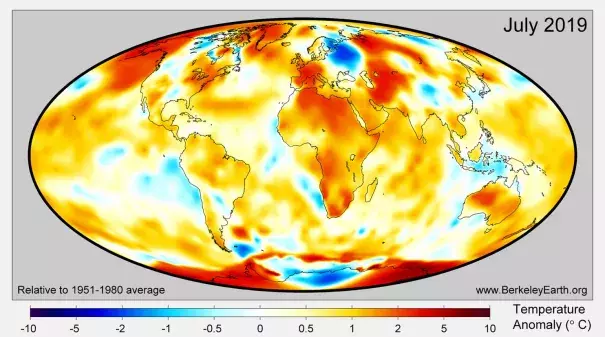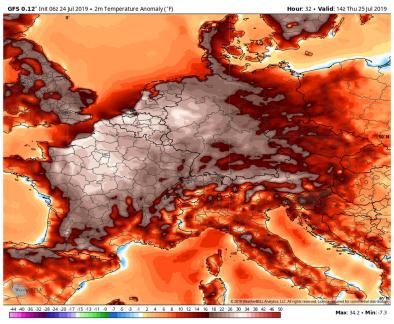July was Earth’s hottest month since records began, with the globe missing 1 million square miles of sea ice

Berkeley Earth, an independent climate monitoring and research organization, released data Thursday showing last month beat August 2016 for the title of the warmest month by 0.14 degrees (0.08 Celsius).
...
The NOAA also announced Thursday that July was the warmest month on record, with the global average surface temperature coming in at 1.71 degrees (0.95 Celsius) warmer than the 20th century average. According to Deke Arndt, head of climate monitoring for NOAA, July 2019 marked the 415th straight month that was warmer than the 20th century average.
In keeping with accelerating global warming, nine of the 10 warmest Julys have occurred since 2005, NOAA found.
...
What makes the July temperature record, as well as the year-to-date trajectory, stand out so much is that there is no longer an El Niño event in the tropical Pacific Ocean. Such natural climate cycles feature warmer than average ocean temperatures that send extra heat into the atmosphere, boosting the planet’s average temperature. A particularly strong El Niño during 2016 propelled that year to record levels, yet in 2019 there has only been a weak El Niño that recently dissipated entirely.
This demonstrates how, due increased concentrations of greenhouse gases in the air from the burning of fossil fuels, the climate no longer needs a strong natural extra dose of warming in order to set a new temperature milestone.
“If you think about climate change as long-term gain on an escalator, kind of riding it up over time, and El Niño and La Niña kind of jumping up and down on that escalator,” Arndt told reporters on a conference call.
He said the fact that July was in the vicinity of a record without a strong El Niño being present is “almost entirely due to climate change.”
...
In addition, NASA found that July was 1.67 degrees (0.93 Celsius) above the 20th century average, making it the warmest July but the second-warmest month in its data base.
NASA, which uses slightly different methods to analyze global surface temperatures, including how it measures temperatures in the relatively data-sparse Arctic, ranks August 2016 as the warmest month on record since 1880.
Related Content



